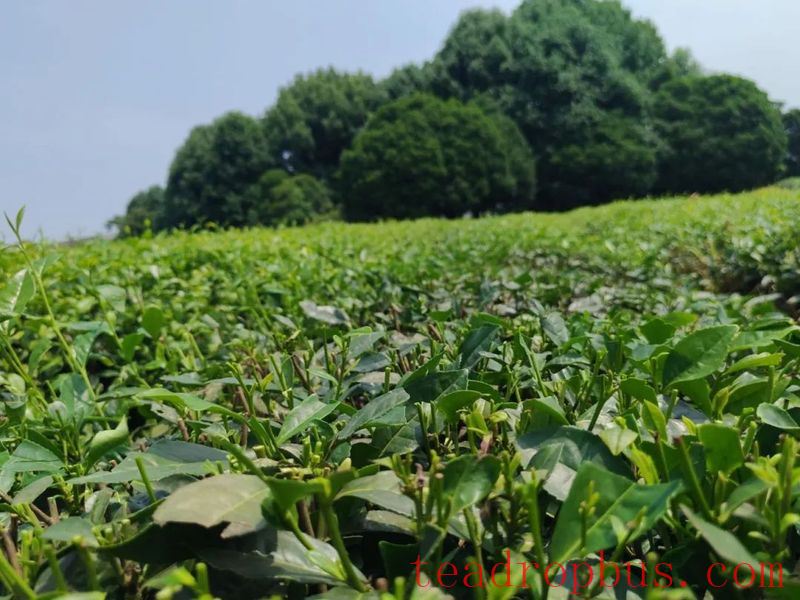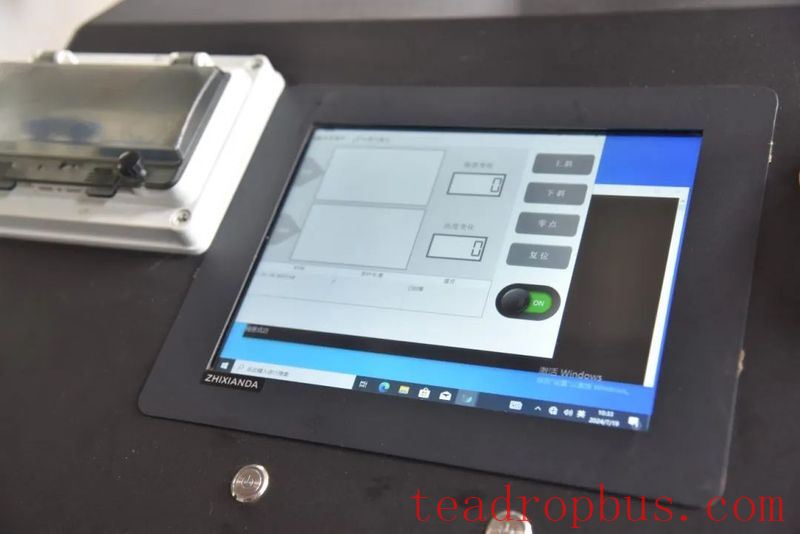When it comes to Tea picking, the first image that comes to mind for many people is workers wearing conical hats and carrying bamboo baskets working amidst lush Green Tea gardens. This is the traditional perception shaped by an ancient industry that has persisted for millennia. But when an “unmanned” tea-picking machine rapidly gathers fresh leaves into its container, it's a moment that upends this perception.
“A person can pick tea while sitting in the shade under a tree.” On July 29th, the reporter saw the smart summer and Autumn Tea harvesting machine mentioned by engineer Wang Pan at the Sichuan Agricultural Machinery Research Institute. Although it may not look high-tech from the outside, the machine internally possesses “a pair of eyes” and “a pair of dexterous hands,” capable of autonomous movement, contour adjustment, and collecting fresh leaves according to programmed instructions.
In recent years, to tap into the benefits of the tea industry, summer and autumn teas, which grow quickly and yield large volumes, have gradually gained attention. Focusing on excavating the potential of mechanical harvesting and improving overall efficiency, the technology for mechanical harvesting of summer and autumn teas in Sichuan has been continuously upgraded and refined in pursuit of breakthroughs.
Smart Remote Control from 200 Meters Away
No Compromise on Quality or Efficiency
Due to low profitability and difficulties in harvesting, tea grown during the summer and autumn seasons in the hilly areas of our province was long neglected, often treated as “waste leaves” and pruned. The emergence of mechanical harvesting technology changed this situation.
“But the commonly used double-person tea picking machines in the province still fail to meet the needs,” Wang Pan explains. Although these machines are called “double-person,” they actually require two people to control the machine head and one or two more to carry the tea bag, leading to high labor demand and long working hours.
Many tea growers also worry about labor risks. The Xianglv Yuan Planting Professional Cooperative, located in Wolong Town, Qionglai City, has over 2,800 acres of tea garden, with summer and autumn tea production accounting for more than 80% of the annual tea output. During peak periods, nearly 10,000 pounds of tea are picked daily. “At least 70% of the available workers are over 60 years old, and their health might not be able to withstand the strain,” cooperative leader Chen Pengfei told the reporter. Summer and autumn tea is mainly used as raw material for mass-market tea, with low profit margins. If the risks are too high, it might be better to abandon it altogether.
To address issues such as low mechanization levels for summer and autumn tea harvesting in hilly area tea gardens, high labor intensity, and high labor costs, the Sichuan Agricultural Machinery Research Institute began developing a smart summer and autumn tea harvesting machine. It was tested in the tea garden of the Xianglv Yuan Planting Professional Cooperative in April this year.

Engineer Wang Pan is adjusting the equipment.
The machine integrates tea picking, collection, and transportation, using a lightweight electric chassis and remote visual control operation. It achieves all-electric drive and can be remotely controlled by a single person from up to 200 meters away. Based on test results, the machine's work efficiency reaches 3-4 acres per hour, three times higher than that of double-person tea picking machines, reducing labor demand by over 80% and lowering labor intensity by over 90%.
“It's even more intelligent.” After trying it once, Chen Pengfei was extremely satisfied, believing it to be at least two generations ahead of the cooperative's imported tea picking machines in terms of advanced features.
Because tea gardens in hilly areas often have gentle slopes and uneven ground surfaces, and tea plants grow differently in height, ordinary machines struggle to meet the requirements for picking different types of leaves (one bud and two leaves, one bud and three leaves, etc.), making it difficult to ensure quality.

An overview of the smart tea picking machine.
“The key challenge we need to overcome is how to make the machine behave like a human, with autonomous judgment capabilities,” Wang Pan explains. The team extracted and modeled spatial information for summer and autumn tea canopies under natural lighting conditions and embedded an intelligent algorithm model into the operating system. This allows the machine to automatically adjust its working posture based on the undulations of the ground and the canopy. “The operator only needs to set target parameters in the system, and the machine will autonomously adjust the tea picking height and angle.”
Moving Towards Fully Automated Smart Harvesting
Dependent on Standardized Tea Garden Management
Although not as valuable as Spring Tea, due to its large volume, summer and autumn tea accounts for 40% of the annual tea value in the province. “Summer and autumn tea resources in the province are abundant, and improving comprehensive utilization rates can genuinely help increase tea farmers' incomes,” says Chen Changhui, secretary-general of the Sichuan Tea Industry Association. To break through the bottleneck in summer and autumn tea harvesting, improve harvesting quality, reduce harvesting costs, and uncover more profit margins, further breakthroughs are necessary.

The tea picking machine adapts to narrow row spacing in tea gardens.
Green, efficient, and intelligent harvesting is the inevitable development trend for tea mechanization. Zhang Xiaojun, deputy director of the Sichuan Agricultural Mechanization Development and Promotion Center, believes that based on existing performance and test results, the smart summer and autumn tea harvesting machine must undergo further intermediate trials and refinement to accelerate the transition from research outcomes to marketable products.
“Issues like the maximum slope it can climb, ease of transfer, and the cost of acquisition and use are practical but crucial for widespread application and promotion,” says Zhang Xiaojun. A new agricultural machine that can be widely applied must not only achieve technical feasibility but also economic viability. In other words, it needs to be usable, practical, and desirable, and most importantly, affordable for users.

The tea canopy after picking.
“The current operational effectiveness fully meets the needs for utilizing summer and autumn tea in hilly areas, but there is still room for improvement,” Wang Pan explains. With the goal of expanding adaptability to tea garden terrain, enhancing operational stability, and achieving full machine intelligence through autonomous movement, the research team has begun developing a newer, more compact model with broader applicability.
The reporter learned that advanced, applicable, safe, and reliable agricultural machinery that producers are willing to use and buy can be included in the scope of agricultural machinery purchase and application subsidies according to regulations.

The operation screen can set picking parameters.
If it cannot reach the frontlines of production, even the best machine remains just a prototype. “We must transform tea gardens; road networks and row spacing are very important. Otherwise, even if the machine is good, the tea cannot be harvested,” Chen Pengfei told the reporter. Thanks to annual improvements to make the tea garden suitable for machinery, the cooperative had the basic conditions needed for prototype testing.
In recent years, our province has focused on improving the suitability of tea gardens for machinery through the construction of modern agricultural parks, but several interviewees believe that more needs to be done.
“Relying solely on agricultural machinery is unrealistic. It must be combined with agronomy to truly achieve mechanized production,” Wang Pan states. Side pruning of tea plants and cultivating tea canopies suitable for mechanized harvesting are essential elements to maximize the advantages of the machine.
Journalist's Notes
Await the “New Fire” to Test New Tea
Throughout history, humans have been a critical element in the tea production chain, especially in the tea picking process. Searching for “tea picking” online only deepens the impression of manual labor with countless images of human workers. However, tea production has entered a new era of mechanization and intelligence.
In the experimental